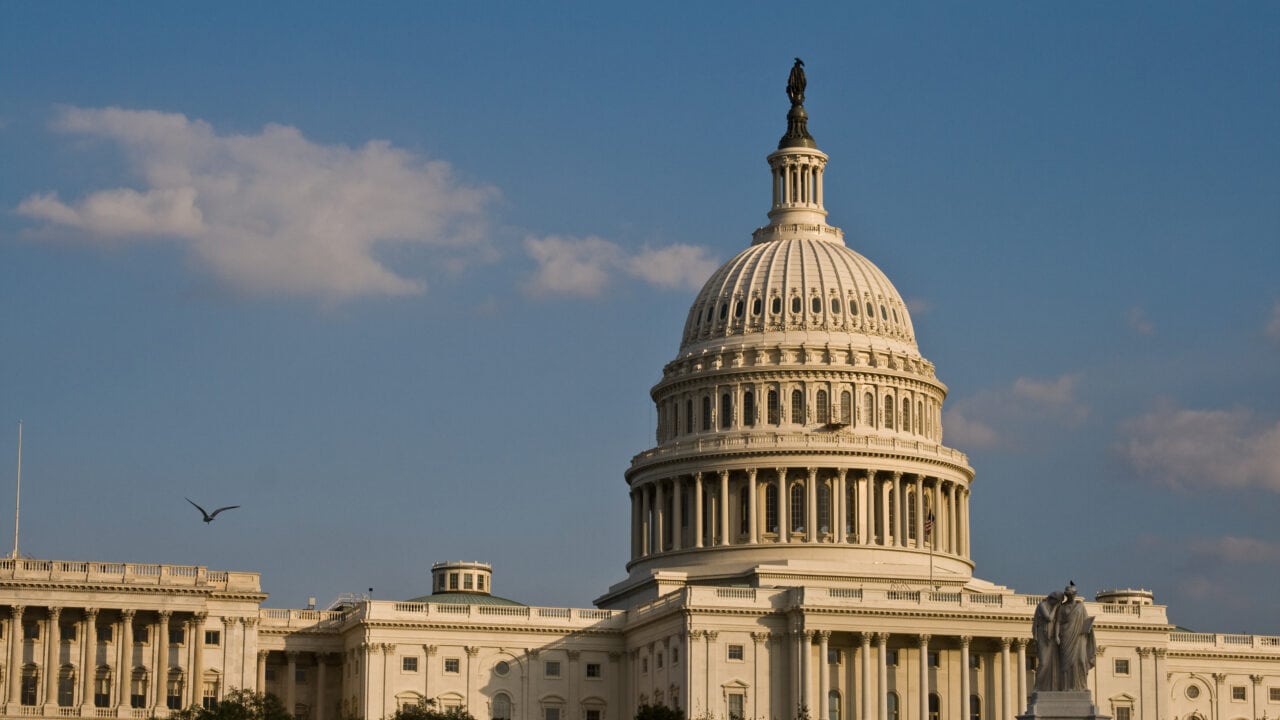 "Capitol Building" by Andrew Malone is licensed under CC BY 2.0. https://flic.kr/p/47FSqx
"Capitol Building" by Andrew Malone is licensed under CC BY 2.0. https://flic.kr/p/47FSqx
While Democrats have argued that Congress should pass a debt ceiling increase without any conditions, Republicans are taking the lead in reining in out-of-control spending. Congressman Randy Feenstra (R-Iowa) introduced the Dollar-For-Dollar Deficit Reduction Act on March 1, legislation all lawmakers should cosponsor and support.
The Dollar-For-Dollar Deficit Reduction Act would require any presidential request to raise the debt ceiling to be coupled with a proposal to reduce spending by the same amount over a 10-year period. Senator John Barrasso (R-Wyo.) is introducing its companion legislation in the Senate.
This bill would not only ensure fiscal sanity in the upcoming debt ceiling fight, but in all future debt ceiling fights. This approach also has extensive precedence.
Since 1985, there have been eight major deficit-reduction laws that have, collectively, reduced spending by trillions of dollars. All of these bills were tied to a debt ceiling hike. Further, many of these bills included net spending reductions near equal to/greater than the accompanying debt ceiling increase, as Rep. Feenstra’s bill seeks to do.
As the Committee for a Responsible Budget demonstrates, dollar-for-dollar spending reductions have historically been a part of several debt limit bills:
- The Omnibus Budget Reconciliation Act of 1990 raised the debt limit by $915 billion but contained about $500 billion in deficit reduction over the next five years.
- The Omnibus Budget Reconciliation Act of 1993 raised the debt limit by $600 billion but contained about $500 billion in deficit reduction over five years. Democrats overwhelmingly voted for both the Omnibus Budget Reconciliation Act of 1990 and 1993.
- The Balanced Budget Act of 1997 included a $450 billion debt limit increase and called for about $125 billion of net deficit reduction over five years and $425 billion over ten years.
- The Budget Control Act of 2011 gave the President the authority to increase the debt limit by $2.1 trillion. It also contained $917 billion in deficit reduction over ten years, primarily through caps on discretionary spending. In addition, the bill established the Joint Committee on Deficit Reduction to produce deficit reduction legislation of at least $1.2 trillion in savings.
Spending reduction is imperative. These past few years, the consequences of the federal government’s out-of-control spending hit Americans where it hurt. Excessive spending led to historic levels of inflation. In 2022, these policies cost the average American family about $7,100 in inflation and higher interest rates, according to a report by the Heritage Foundation.
This is largely why the public is supportive of a conditional debt ceiling increase. A recent Harvard-Harris poll found that 63 percent of Americans want Congress to raise the debt ceiling “only with constraints” on future spending. A whopping 46 percent of Democrats agreed.
At this point, all spending restraint options are on the table. Of the current options, the Dollar-For-Dollar Deficit Reduction Act would be a sensible and highly effective way of constraining current and future spending.

